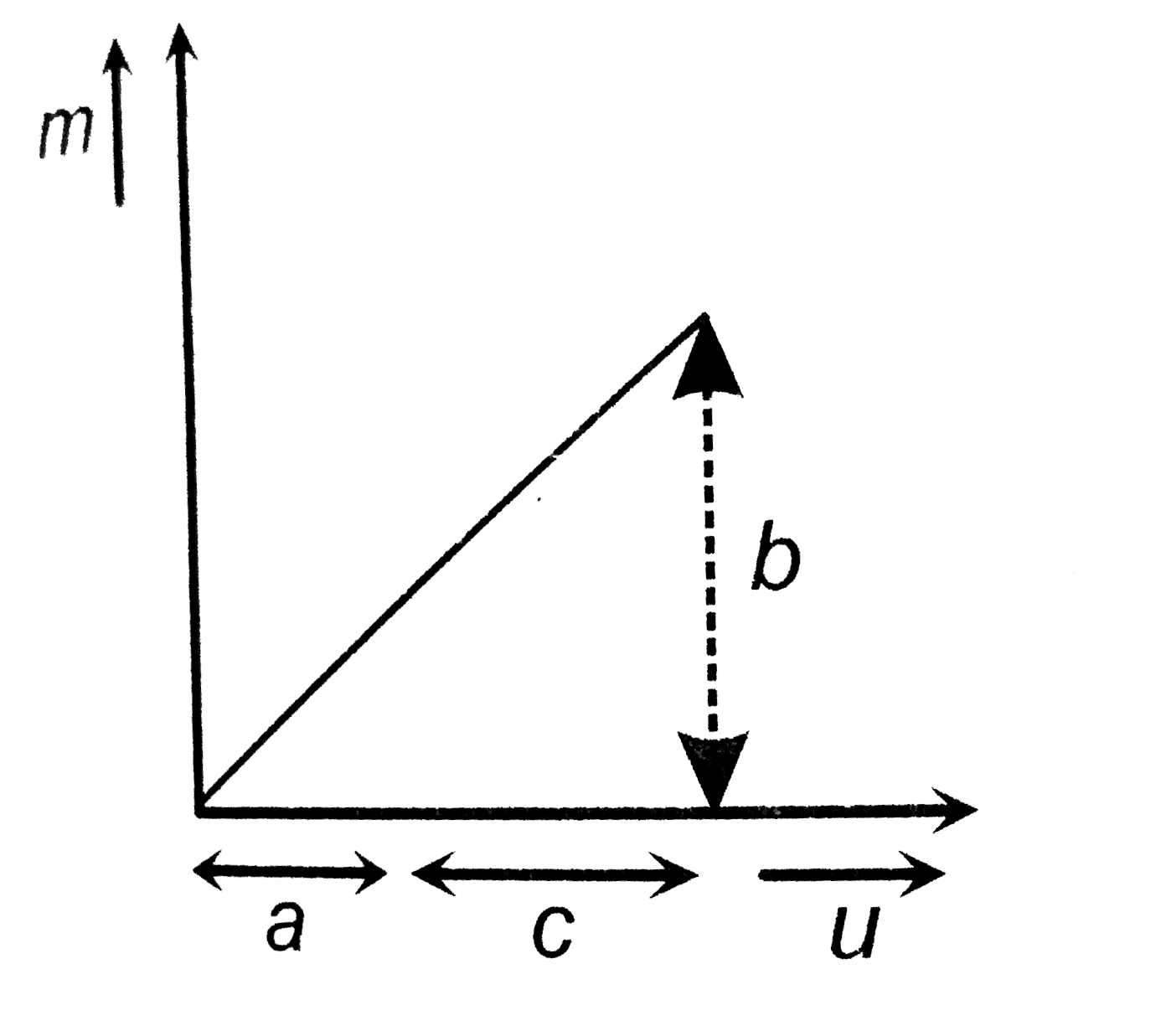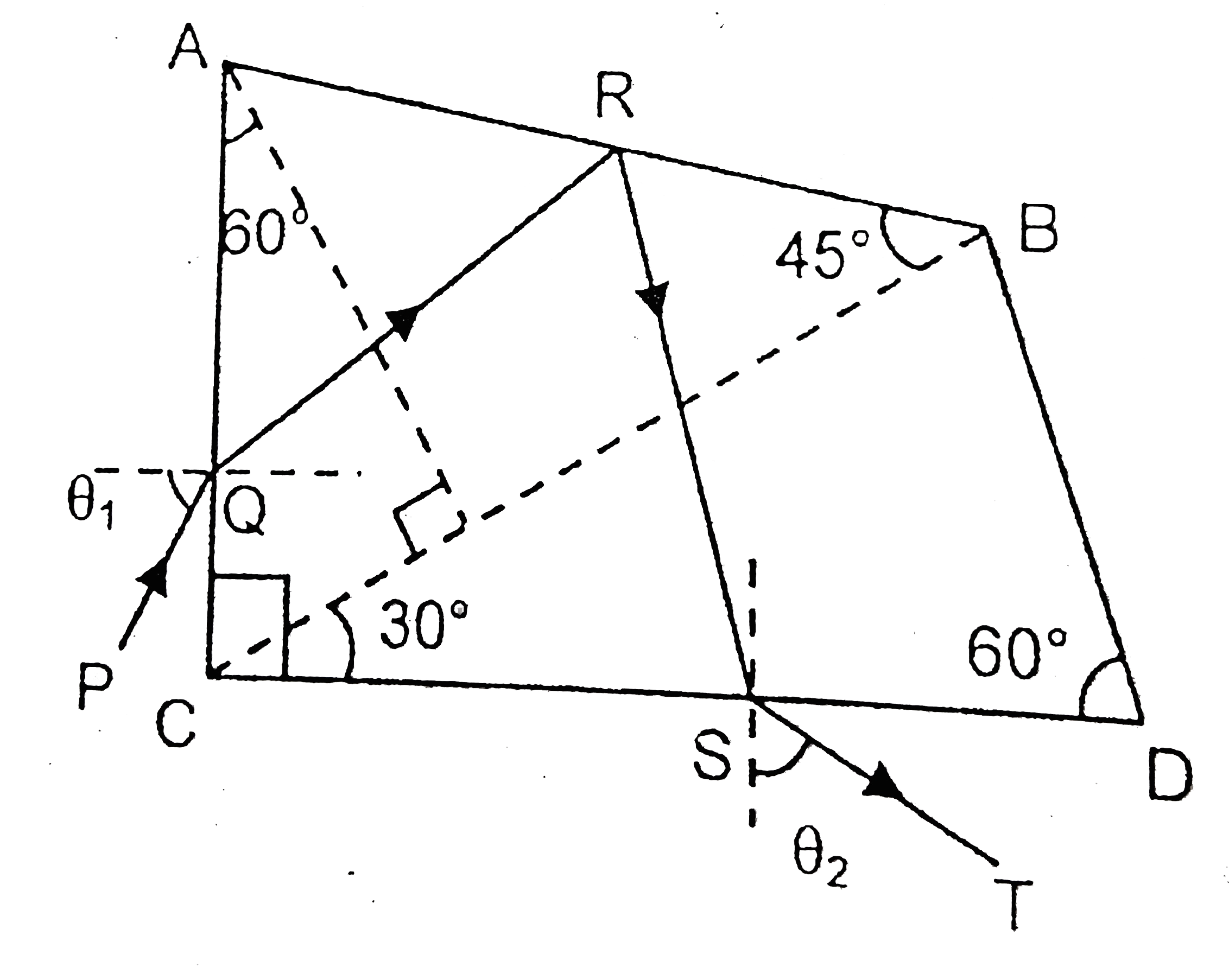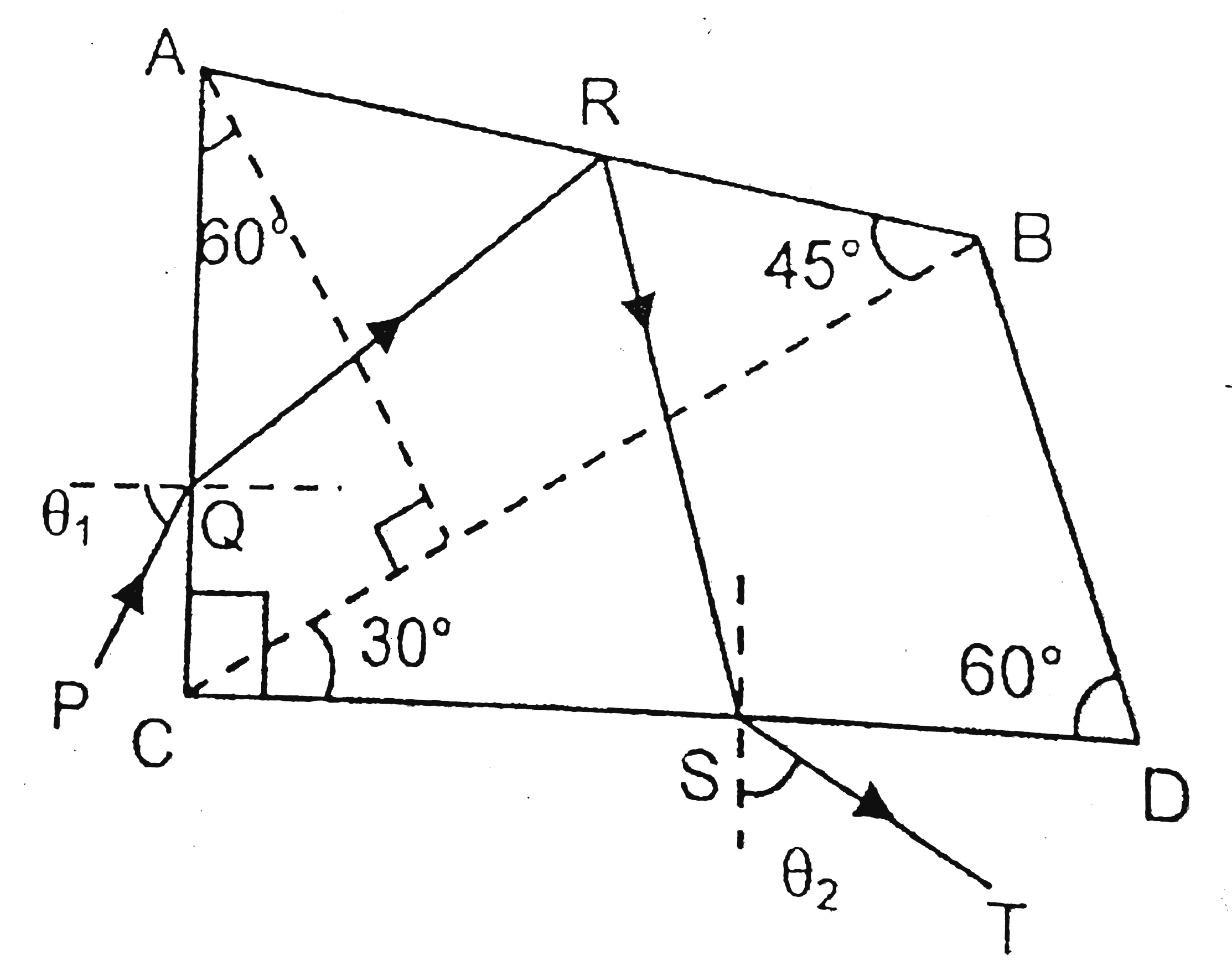Read the paragraph and the figure carefully and answer the questions.

The figure shows a constant deviation prism ABCD. The incident ray is PQ and the emergent ray is ST. Although it is made up of one piece of glass, it is equivalent to two 30∘−60∘−90∘ prisms and one 45∘−45−90∘ prism. The angle θ1 is the angle of incidence on face AB. The path of the ray inside the prism is indicated in the figure.
For this prism, μ=2sinθ1
The total deviation of the incident ray when it emerges out of the prism is
90∘
60∘
30∘
45∘
The correct Answer is:A
Topper's Solved these Questions
- RAY OPTICSBOOK - CENGAGE PHYSICSCHAPTER - RAY OPTICSEXERCISE - DPP 1.6
12 Videos
- RAY OPTICSBOOK - CENGAGE PHYSICSCHAPTER - RAY OPTICSEXERCISE - DPP 1.4
15 Videos
- PHOTOELECTRIC EFFECTBOOK - CENGAGE PHYSICSCHAPTER - PHOTOELECTRIC EFFECTEXERCISE - Integer Type
4 Videos
- RAY OPTICS AND OPTICAL INSTRUMENTSBOOK - CENGAGE PHYSICSCHAPTER - RAY OPTICS AND OPTICAL INSTRUMENTSEXERCISE - QUESTION BANK
40 Videos
Similar Questions
A simple telescope, consisting of an objective of focal length 60 cm and a single eye lens of focal length 5 cm is focussed on a distant object in such a way that parallel rays comes out from the eye lens. If the object subtends an angle 2∘ at the objective, the angular width of the image
View SolutionThe graph shows how the magnification m produced by a convex thin lens varies with image distance v. What was the focal length of the used ?

View SolutionAn α particle and a proton are accelerated from rest by a potential difference of 100V. After this, their de-Broglie wavelengths are λa
and λp respectively. The ratio λpλa, to the nearest integer, is.
View SolutionThe diagram shows a mirror system. If after two reflections the image and the object O coincide with each other, then the value of radius of curvature (in metre) of the concave mirror is (Take a=3m )
'(##CEN_KSR_PHY_JEE_C26_E01_001_Q01##)'
View SolutionA ray of light is incident at an angle of 60∘ on the face of a prism having refracting angle 30∘. The ray emerging out of the prism makes an angle 30∘ with the incident ray. Show that the emergent ray is perpendicular to the face through which it emerges.
View Solution
The figure shows a constant deviation prism ABCD. The incident ray is PQ and the emergent ray is ST. Although it is made up of one piece of glass, but it is equivalent to two 30∘−60∘−90∘ prism and one 45∘−45∘90∘ prism.The angle θ1 is the angle of incidence on face AB. The path of the ray inside the prism is indicated in the figure. for this prism μ=2sinθ1.
Q. The ratio θ1θ2 is
View Solution
The figure shows a constant deviation prism ABCD. The incident ray is PQ and the emergent ray is ST. Although it is made up of one piece of glass, but it is equivalent to two 30∘−60∘−90∘ prism and one 45∘−45∘90∘ prism.The angle θ1 is the angle of incidence on face AB. The path of the ray inside the prism is indicated in the figure. for this prism μ=2sinθ1.
Q. The total deviation of incident ray when it emerges out of the prism is
View SolutionA ray of light is incident at an angle of 60^(@) on one face of a prism of angle 30^(@) . The ray emerging out of the prism makes an angle of 30^(@) with the incident ray. The emergent ray is
View SolutionRead the paragraph and the figure carefully and answer the questions.

The figure shows a constant deviation prism ABCD. The incident ray is PQ and the emergent ray is ST. Although it is made up of one piece of glass, it is equivalent to two 30∘−60∘−90∘ prisms and one 45∘−45−90∘ prism. The angle θ1 is the angle of incidence on face AB. The path of the ray inside the prism is indicated in the figure.
For this prism, μ=2sinθ1
The ratio of θ1θ2 is
View SolutionRead the paragraph and the figure carefully and answer the questions. The figure shows a constant deviation prism ABCD. The incident ray is PQ and the emergent ray is ST. Although it is made up of one piece of glass, it is equivalent to two 30^(@)-60^(@)-90^(@) prisms and one 45^(@)-45-90^(@) prism. The angle theta_(1) is the angle of incidence on face AB. The path of the ray inside the prism is indicated in the figure. For this prism, mu=2 sin theta_(1) The angle of refraction on the face AB is
View SolutionA ray of light is incident at 60^(@) on one face of a prism of angle 30^(@) and the emergent ray makes 30^(@) with the incident ray. The refractive index of the prism is
View SolutionA ray of light is incident at an angle of 60∘ on one face of a 30∘ prism . The emergent ray from the prism makes an angle of 30∘ with the incident ray. The angle of emergence and refractive index of the material of the prism are-
View SolutionA prism has a prism angle 60^(@) . A light ray incident at an angle of 45^(@) deviates by an angle 40^(@) . Calculate the angle between emergent ray and prism surface.
View SolutionA ray of light is incident at an angle of 60∘ on one face of a prism of angle 30∘. The ray emerging out of the prism makes an angle of 30∘ with the incident ray. The emergent ray is
View SolutionA ray of light is incident at 60∘ on one face of a prism of angle 30∘ and the emergent ray makes 30∘ with the incident ray. The refractive index of the prism is
View Solution
